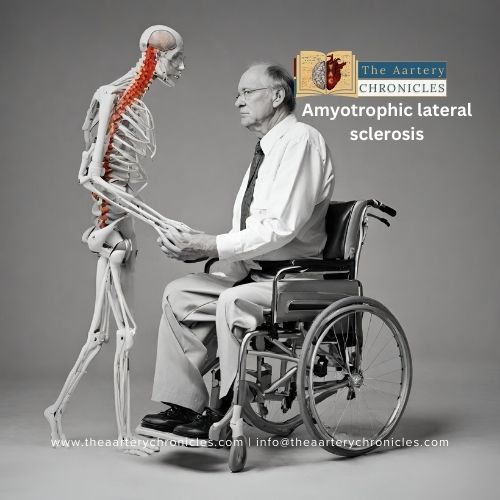

Meghalaya Reports Rare Polio Case: What You Need to Know
A two-year-old child from Meghalaya has tested positive for polio, a highly infectious viral disease that can cause severe paralysis or even death. This news has raised concerns, especially as polio is a crippling disease that primarily affects children under the age of five and spreads through contaminated water and food or contact with an infected person. However, officials from the Health Ministry have clarified that the case is a vaccine-derived infection and not caused by the wild poliovirus. They have assured the public that there is no need for widespread alarm, as India’s polio-free status remains intact.
What is Polio?
Polio, or poliomyelitis, is a highly contagious viral disease caused by the poliovirus.
- It primarily affects young children and can lead to symptoms ranging from mild flu-like signs to severe complications such as paralysis and even death.
- The virus spreads through contaminated water and food or contact with an infected person.
- While most polio infections are asymptomatic, a small percentage can result in irreversible paralysis, typically in the legs. In severe cases, the disease can affect the muscles that help with breathing, leading to death.
Is India Really Free from Polio?
India was declared polio-free by the World Health Organization (WHO) in 2014, following three consecutive years without any cases of wild poliovirus. This achievement was a result of
- Extensive immunization campaigns
- Public health initiatives
- International cooperation
However, the recent detection of a vaccine-derived polio case in Meghalaya has raised questions.
Vaccine-derived poliovirus is not the same as the wild poliovirus that once plagued the country. The vaccine-derived cases occur when the weakened virus used in oral polio vaccines mutates and regains the ability to cause disease in under-immunized populations. These cases do not impact India’s polio-free status, as the WHO’s definition is based on the absence of wild poliovirus transmission.
Therefore, while India remains free of the wild poliovirus, it must continue rigorous vaccination and surveillance efforts to prevent both vaccine-derived and wild polio infections.
Vaccine-Derived Polio and Its Implications
Vaccine-derived poliovirus is linked to the weakened form of the virus used in oral polio drops for immunization. While the oral polio vaccine (OPV) is generally safe and has been effective in eradicating polio worldwide, it can, in rare instances, cause the disease in children with weakened immune systems. The vaccine virus can be excreted and, over time, mutate genetically in the bloodstream.
OPV can lead to vaccine-derived strains in two ways:
- The weakened virus continues circulating among children, regaining its ability to spread and cause severe infection.
- In children with weakened immune systems, the virus can replicate in the gut over years, slowly regaining its ability to cause severe infection.
In the Meghalaya case, the virus appears to have replicated within one child. Since most children in the area are likely fully immunized, controlling the spread should be more manageable.
History of Vaccine-Derived Polio Cases in India
While India remains free of the wild poliovirus since 2014, cases of vaccine-derived poliovirus have been detected:
- Last Wild Poliovirus Case: Reported in 2011 in West Bengal’s Howrah district.
- Polio-Free Status: India was declared polio-free by the World Health Organization in 2014 after three consecutive years without any wild polio cases.
Vaccine-Derived Polio Cases: Detected after 2014, despite the polio-free status.
- 2013 Case: A fatal case in an 11-month-old immunodeficient child in Maharashtra.
- 2013 Case in Delhi: Detected in a 2.5-year-old child.
- Detection in Sewage Samples: Vaccine-derived poliovirus was found in sewage samples in Kolkata in 2022.
India's Polio-Free Status Remains Unchanged
India continues to be considered polio-free unless new cases of wild poliovirus infections are detected. The detection of vaccine-derived cases does not change this status.
Changes in the Oral Polio Vaccine Regime Since 2016
After the eradication of type 2 wild poliovirus, changes were made to the oral polio vaccine to prevent vaccine-derived infections:
- Three Types of Polioviruses: Polioviruses that infect humans are classified into three types: types 1, 2, and 3.
- Original Oral Polio Vaccine (OPV): Initially included weakened forms of all three types to provide broad immunity.
Eradication of Type 2 Wild Poliovirus: Type 2 wild poliovirus was eradicated globally in 1999.
- Vaccine-Derived Infections Linked to Type 2: 90% of circulating vaccine-derived polio infections were associated with type 2 strains.
- Switch to Bivalent Vaccine in 2016: The trivalent OPV (covering all three types) was replaced with a bivalent OPV (covering only types 1 and 3) to eliminate the risk of vaccine-derived infections from type 2.
- Global Coordination: This effort required synchronized vaccination campaigns worldwide to prevent type 2 vaccine-derived infections across regions.
Calls for a Shift to Inactivated Poliovirus Vaccine (IPV)
While the oral polio vaccine (OPV) is effective in preventing the spread of polio and is easy to administer.
There are risks that have prompted experts to suggest a shift to the inactivated poliovirus vaccine (IPV):
- Risk of Vaccine-Derived Infection: In rare cases, OPV can cause an infection, which can then spread to others, especially in areas with low immunization coverage.
Shift to Inactivated Poliovirus Vaccine (IPV)
- To eliminate the risk of vaccine-derived polio, experts recommend using IPV, which contains no live virus and cannot cause infection.
Limitations and Requirements of Inactivated Poliovirus Vaccine (IPV)
- Limitation of IPV: IPV protects individuals from polio infection but does not prevent the virus from being transmitted to others.
- High Immunization Levels Required: For IPV to be effective in preventing outbreaks, a high level of immunization coverage must be maintained to control potential virus spread.
Source: Inputs from various media Sources









